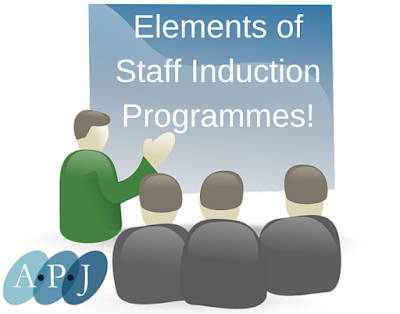Working with the guy who shows up at 9.15am with the remainder of last night’s party on his breath is fun for no one. Nor is dealing with the undecider who takes days to produce a one-page report.
Difficult people can drive you batty, but there are effective ways to tolerate this in the workplace.
1. Listen
We’re all human - we have bad days, but bad days shouldn’t turn into weeks and months in the workplace. If an employee is difficult, it may be because they are unhappy in their position, or there are personal issues. As a manager, you should always give your employees the opportunity to express their side first. Don’t be a school teacher where you don’t give your team the chance to explain their side first, before jumping to the dark side.
Listening shows you care and it may also highlight that the solution is a quick fix solvable by you.
2. Feedback Meetings
Complaining about employees for months, or even years, is not a constructive way of dealing with difficult staff. The situation will not miraculously resolve itself. Be proactive.
Hearing you haven’t done so good on your latest task isn’t the best thing to hear, but you shouldn’t be afraid to tell staff that you disagree with what they’re doing. If your directions are clear, the meeting can lead to huge progression.
Giving honest feedback is uncomfortable for any manager, but it doesn’t have to be a dire process.
Make the meetings regular—every six months is great, because it doesn’t allow employees to get off track.
Make feedback meetings structured, so everybody knows what is expected of them when they close the office door and sit down at their computer. Use the meeting to inspire your team to work harder. Specific targets and clear deadlines will mean that staff have no excuse for uncompleted work, unless they don’t understand - in which case, ask if they have any questions. They shouldn’t feel uncomfortable asking. If they do, there is a definite need to make changes to your management style.
Begin feedback meetings by asking employees how they view their own work ethic. Having an understanding of how they view themselves is a great starting point. A great manager gives their employees a chance to explain their side of a story.
3. Be Consistent
If there are set rules, don’t occasionally allow some staff to break them. A person shouldn’t be punished for not doing something, and then let off the following week. This is unreliable management and staff won’t know where they stand, and the likelihood is they won’t take you seriously when they are penalised.
4. Help Staff Get Back On Track
A good manager doesn’t just tell their employees what to do, and then leave them to it. They help their employees. That doesn’t mean holding their hand and checking up on them every five minutes. But regular reviews will keep them heading in the right direction, so they don’t fall off track.
The best teachers at schools are those who explain what students need to do, and are very approachable, so students never fear asking them for help if they're confused. At times, being a manager is similar to the role of a teacher.
Coach the difficult employee through their problems and find suitable solutions if current ones aren’t working for them. Try new methods.
Don’t make employees feel like a failure, but give them time to adjust their behaviour and actions, with deadlines (of course, you can’t keep hoping they will change).
5. Get Involved Soon
Don’t allow the problems to build up and spiral out of control. If an employee hasn’t worked to the company’s standards, step in. Don’t wait until there is another problem and then another, until some action is taken. This invites trouble.
It’s easier from the beginning if employees know where they stand. One problem is easier to deal with than ten.
If an employee thinks they are getting away with regularly texting during work hours and subscribing to YouTube videos, they will persistently do this, which over time is costing your business time and money.
6. Don’t Just Focus On The Negative Things
This probably goes against everything you’ve just read, but honestly, if a manager only focusses on what an employee is doing wrong, they won’t notice when something is done right.
A manager should believe in their staff; after all, they hired them because they’re skilful and talented. Baby steps in the right direction are better than continuing with a poor work ethic. Remember that.
If an employee who never gets in on time suddenly starts showing up ten minutes early, they don’t deserve a gold medal, but this progress should be recognised.
7. Know Staff
Getting to know staff can make life easier. They will feel that they can communicate their issues to their manager, and the manager can also notice when things aren’t right.
A bad manager hides in their office all day and lets their staff get on with their work unsupervised – never asking how they’re getting on. A good manager understands their staff, sees through their fake smile and notices when they aren’t typing away like they usually are.
Having a close relationship with all staff members makes life easier. Asking regularly how they’re getting on can stimulate the quiet ones in the office to approach you if they’re quietly stressing.
PJ
☎ 020 89310165
☏ 07900537459
























